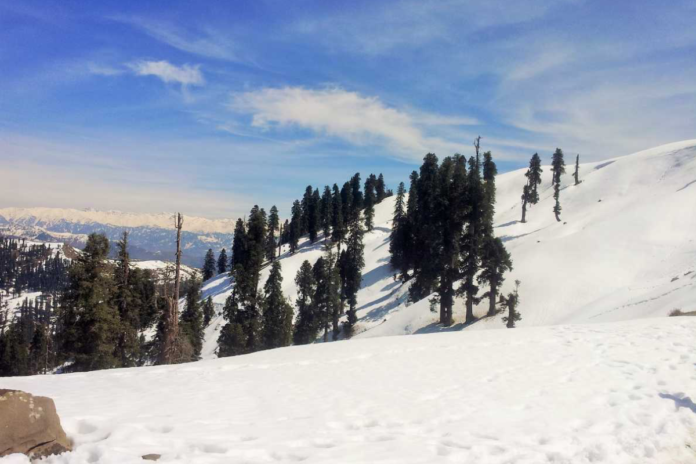Both residents and visitors to Kashmir are happy with the recent snowfall. The tourism sector plays a major role in the state’s economy, and the arrival of snow after a prolonged drought is anticipated to draw visitors to the shimmering silver valley.
Due to the lack of significant snowfall over the past few months, Kashmir’s tourism sector has been struggling. Typically, snow falls during “Chilla-i-Kalan,” a hard 40-day winter season that finishes on January 31. But this year, the time passed with barely a hint of snow in the final moments.
Now, the Drass area of Ladakh and the Zojilla Axis on the Srinagar-Leh Highway have both received new snowfall. The minimum temperature recorded in Srinagar, the summer capital of Jammu and Kashmir, was 3.6 degrees Celsius. The temperature in other parts of the region was reported at minus 0.7 degrees Celsius in Pahalgam, 2.0 degrees Celsius in Qazigund, 0.5 degrees Celsius in Kokernag, and 1.7 degrees Celsius in Kupwara. Gulmarg was the only place in the valley to have a nighttime low below freezing, with a reading of minus 3.2 degrees Celsius.
Numerous locations within the Union Territory could see light to moderate rain or snow, according to forecasts from the India Meteorological Department (IMD). Over the next two days, a number of locations, including Kupwara, Bandipora, Baramulla, Ganderbal, Shopian, Kulgam, and Anantnag districts, are predicted to have significant snowfall. The administration has sent out warnings to residents and visitors going to Sonamarg and Gulmarg.
In addition, the weather service has issued orange and yellow alerts for other Northern Indian states due to unusually heavy rainfall and strong cold waves. A period of precipitation is expected to affect the Western Himalayan region from January 29 to February 3, with the potential for significant flooding on January 30 and 31.




